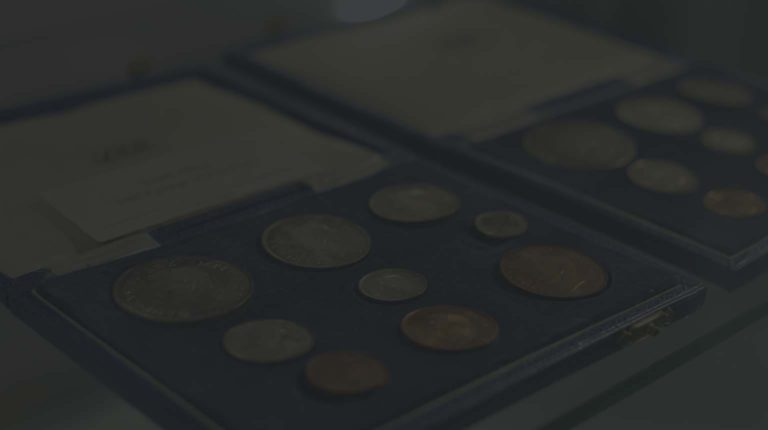China Empire (General Issue)
Bank of China, Specimen 50-Yuan, Year 2 (1913).
In CMC holder graded Gem Uncirculated 65 OPQ, rare.
Lot 10 in Hong Kong Coin Auction 60 – Estimate US$7,500-9,000
Imagine the scene: you are a goldsmith, and its the middle of the 17th Century. Life is, by the standards of the day, pretty good. You have more than enough to eat, trade is brisk (gold is nicely abundant) and you’re making enough money to keep your family fed and watered.
In fact, life as a goldsmith has seen quite a rise in prosperity over the last fifty years or so. Since Henry VIII dissolved the monasteries in the mid 16th Century, you’ve been able to accumulate quite a lot of gold.
So, just where do you keep it?
Hiding it under the mattress seems a bit unsafe, not to mention the fact that mattresses haven’t been invented yet and as its the 17th C your mattress is more than likely made of straw. Putting a big pile of gold under it is going to do nothing for your back.
Step forward the Royal Mint. Which was, in fact, where the majority of wealthy goldsmiths stored their gold at the time. All was safe and good for a while, until along came Charles I, who seized all the gold stored at the Royal Mint in order to pay for his revolutionary reforms.
Suddenly, ‘under the mattress’ (straw or not) no doubt seemed like a good idea after all, even it would have given you a bad back.
What the goldsmiths did instead was to start accepting gold from the gentry and aristocracy, who were also looking for places to store their gold in order to ‘keep it from the plundering hands of that Charles fellow’.
Banking in England was born.
When the goldsmiths stored gold from the gentry in this fashion, they would often give the depositee a written note with signed and written instructions as to how they would pay it back. Something along the lines of ‘I promise to pay the bearer the sum of…’.
Sound familiar? The banknote had been brought into existence.
But was this the banknotes first appearance? Whilst the transition to ‘paper money’ may have seemed like a natural progression, albeit accelerated by political upheaval, it was very far from being an entirely new phenomenon. In fact, the Chinese had already been there – around 500 years previously.
China Empire (General Issue)
National Commercial Bank Ltd, Specimen 10-Yuan, 1 October 1923
About uncirculated with original paper, scarce.
Lot 26 in Hong Kong Auction 60 – Estimate US$3,000-4,000
In the ancient city of Pingyao in Shanxi Province, there sits a small and otherwise unremarkable cave. What is remarkable is the plaque that is fixed to the side of its entrance, declaring that ‘(this) underground cave is a treasury, in the old days silver and money leave here temporarily’. Ambiguous mistranslation aside, this cave actually marks the ancient banking centre of late Imperial China, where the first Chinese banks originated.
The rise of the ‘banknote’ in Ancient China came, as with the British version, out of necessity, and owes its emergence to the Silk Road, the trading route that ran for many centuries, linking China with the Peninsulars of India and Arabia, as well as Persia and the Meditteranean, and extending by sea as far as East Africa and Java.
With the abundance of so many different currencies along its length (divided not only by country but often by extremely small region), the traders along the Silk Road would often use what became known as ‘letters of credit’ as a more convenient mode of exchange. You guessed it – ‘I promise to pay the bearer…’.
The practice flourished and proved extremely effective, but was dealt a severe blow upon the crumbling of the Mongol Empire in the 13th Century, which saw the Silk Road trade fragment considerably.
By around 1450, the usage of paper money had pretty much died out. It did, however, pave the way for the next financial area throughout China.
China (Puppet Banks)
Central Reserve Bank of China, Error, 5-Yuan, 1940.
IN PMG holder graded Choice Uncirculated 63 EPQ.
Lot 94 in Hong Kong Coin Auction 60 – Estimate US$300-400
Flash forward a few hundred years and back in the UK our goldsmiths (and their descendants) are doing rather well for themselves. By 1784, there were more than 100 provincial banks in the UK. The Industrial Revolution had seen a huge increase in banking practices, as well as a vertiable explosion in foreign trade. Trade to places such as India, Persia, and of course, to China.
Around the middle of the 19th Century British and other European banks entered China, primarily to service the rapidly expanding number of Western trade firms who had expanded to the region.
The banknote had become a staple the world over – a fact that endures, of course, to this day. The denominations may well have changed over the centuries, and the faces that adorn them open to more public scrutiny (and often controversy), but whether it be a 17th Century English goldsmith, a Chinese purveyor of spices along the Silk Road, or the notes you just pulled out of the ATM, the principle remains the same: ‘I promise to pay the bearer the sum of….’.


